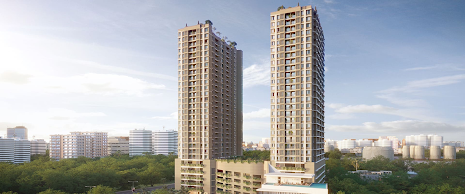Why Is There Such a High Demand For Green Homes?
ajmera one kalyan In comparison to a well-known home, green homes are known to maximize the use of energy and water resources. They produce less trash and are more environmentally friendly. In other words, they are directly related to the condition of protecting the environment and reducing operating costs for the population. Despite having a higher ownership cost than standard residences, green properties are typically more cost-effective in the long run. Making an informed domestic purchasing selection requires understanding what greenhouses are and appreciating their benefits in terms of health and costs.
The IGBC Green Homes is a ranking system for environmentally friendly residential practices that was created in India by the Indian Green Building Council (IGBC). It is a consensus-based tool designed to make it easier to use site resources efficiently, conserve water, use power more effectively, handle household waste, use the most trustworthy fabric, and create healthy, cosy, and ecologically friendly houses.
Characteristics of a Green home
Consult the builder and learn the environmental impact of the structure from the ground up until the completion of the construction to determine whether or not it is Green. A variety of holistic construction methods that adhere to the IGBC-set building standards should be used to construct the house or building out of environmentally friendly building materials. Some of these methods or features include:
Location: One of the best aspects of green homes is that they are built in areas where the environment and wildlife are not harmed. They are typically located near public transportation in densely populated areas. These properties are also positioned to make the best use of natural resources like air and sunlight. For instance, a house facing south can best utilize solar energy, which can be utilized to heat the residence or generate power.
Materials: Reduce, Reuse, and Recycle (the three Rs) must be applied to the raw materials required to build a green home. To minimise their negative effects on the environment, they should be made locally, non-toxic, biodegradable, and reused to maximize their potential for reuse and recycling (even after the construction is demolished). In order to reduce their dependence on electricity, homes should also be able to generate renewable energy, such as solar energy or photovoltaic cells.
Design: Green homes are built to allow for enough natural light to enter, reducing the need for electrical lighting. In order to reduce the use of artificial heating and cooling, Greenhouses strategically use insulation and air flow strategies. These features keep the house warm in the winter and cool in the summer. Utilizing vertical gardens or green roofs can help reduce pollutants and improve the air quality around a building.
Energy: efficiency: Energy-efficient appliances, such as solar- or thermal-powered lighting and fans, are used in green buildings. Electricity consumption can be decreased by about 30% annually by using such appliances.
Water usage: To conserve water, green homes use water-saving irrigation systems, rainwater harvesting systems, and environmentally friendly kitchen and bathroom fixtures. Native plants are used in the landscaping surrounding the house since they demand a lot less water than non-native plants do.
Cost: Compared to conventional buildings, green projects are slightly more expensive. However, lower operational costs may help you close the rate gap in two to three years. In the long term, green homes end up being more cost-effective.
Benefits of living in a greenhouse
Economic advantages
Environmental advantages
Personal health
Quick tips for going green in your house
Replace incandescent light bulbs with LEDs, which consume less electricity overall.
To reduce carbon dioxide emissions, adjust the HVAC system to two stages higher in the summer and two stages lower in the winter.
When not in use, you should unplug everything that is plugged into an electrical socket, including your TV, computer, printer, video game console, and microwave, to potentially save up to two months' worth of electricity.
Always use cold water while washing clothing to save roughly 80% of the energy used to heat the water.


Comments
Post a Comment